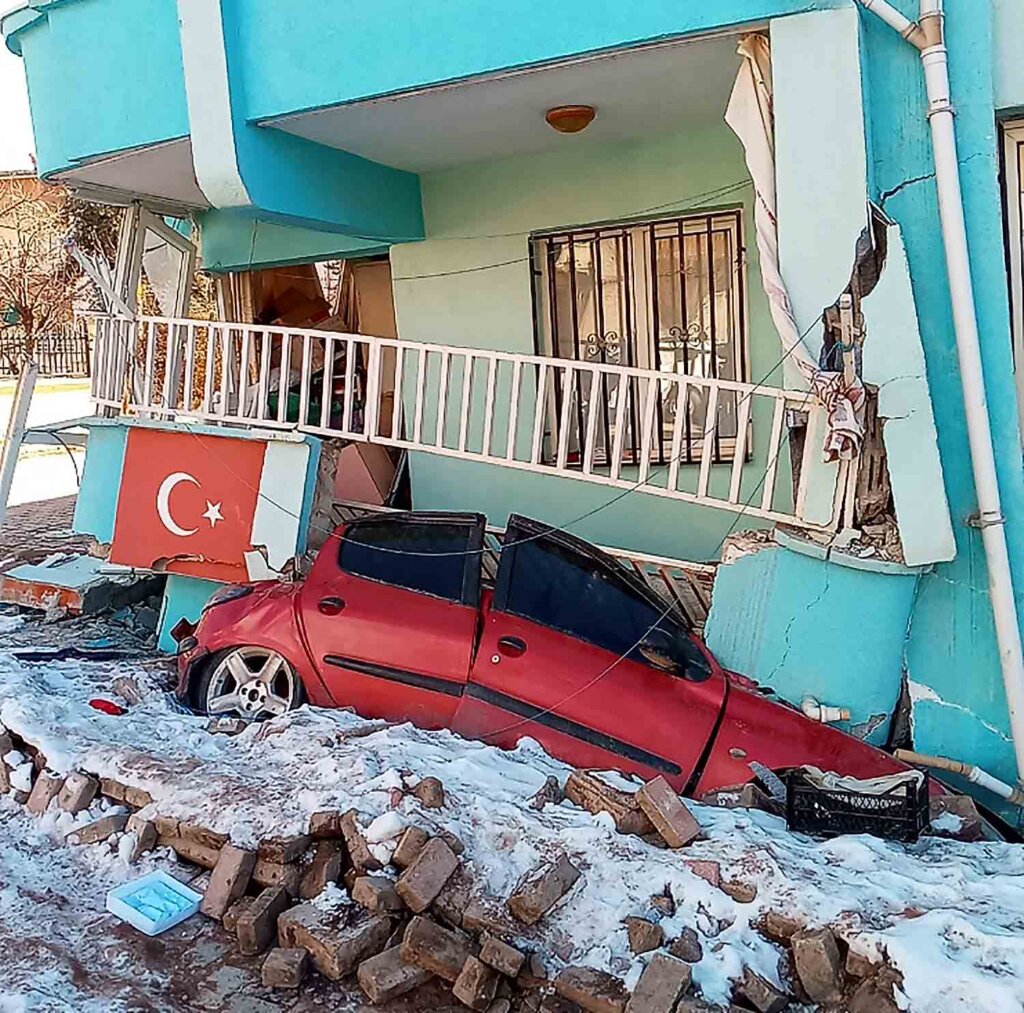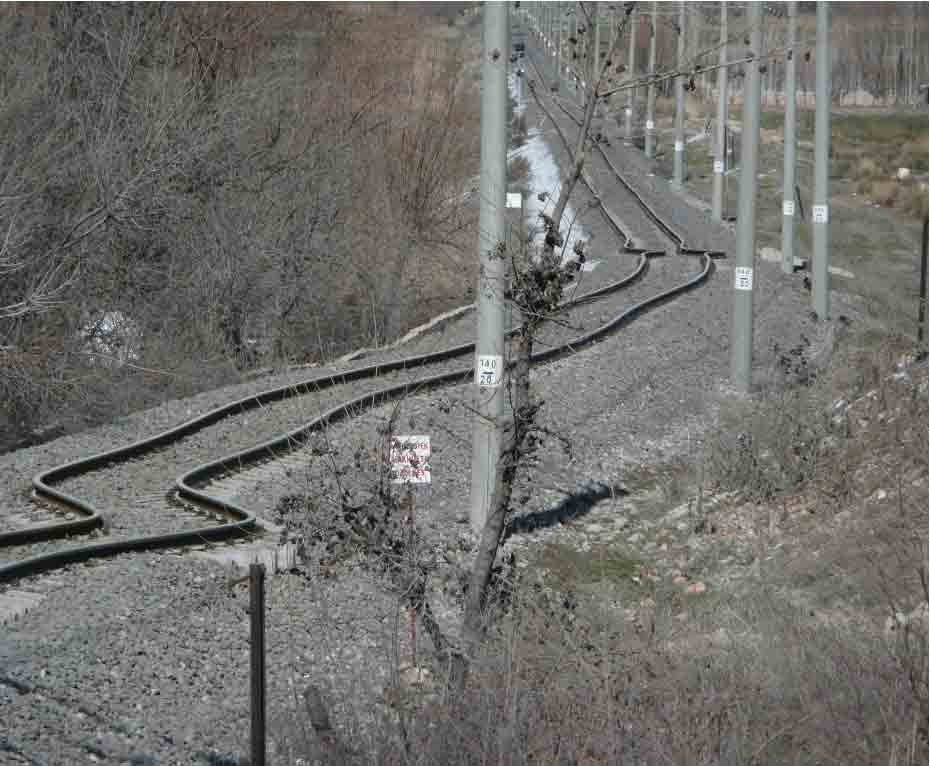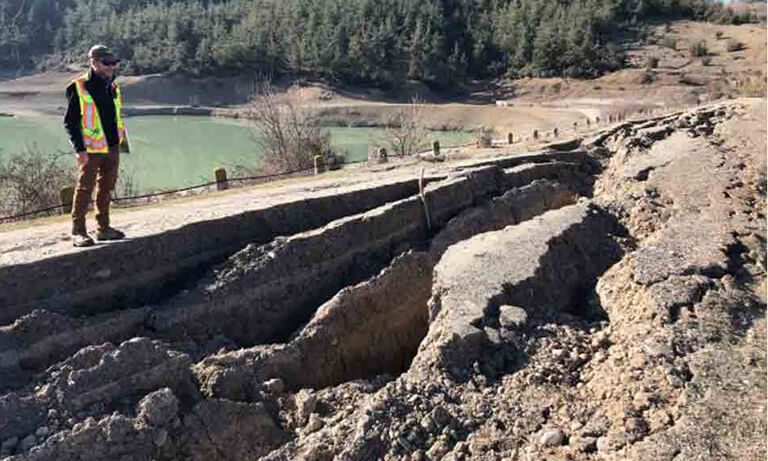Robb Moss Will Discuss His Observations and Implications for Turkey and the Broader Seismic Community
A Cal Poly professor who has studied earthquakes for over 20 years knew he needed to get on the ground in Turkey to collect data — and find answers — in the aftermath of one of the deadliest quakes in a decade.

Robb Moss from the Civil and Environmental Engineering Department is on the steering committee for a volunteer organization of geotechnical researchers that deployed him days after the Feb. 6 earthquakes of 7.8 and 7.5 magnitude. The temblors flattened buildings and killed more than 47,000 people across southern Turkey and northern Syria.
“We drove over 2,500 kilometers (1,550 miles), observed ground and structural damage, and talked to locals through a translator so we could put our arms around the problem,” he said. “It’s critical we learn the most we can from these earthquakes, so we don’t have to repeat the same mistakes.”
Moss, who has taught at Cal Poly since 2006, will share details of his reconnaissance, along with the implications for Turkey and the broader seismic community, during a special presentation from 6:40 to 8 p.m. on Wednesday, March 8, in the Advanced Technology Laboratories building (No. 7) at Cal Poly.
The free event is open to the public and will include a discussion, slideshow and time for questions.
Moss was a lead investigator for the Geotechnical Extreme Events Reconnaissance (GEER) Association team sent to Turkey to make firsthand observations about the quake’s destruction and inform other U.S. research teams heading to the region. Moss joined three other U.S. experts in the GEER group: Ayhan Irfanoglu of Purdue University and Ayse Hortacsu of the Applied Technology Council, both from the nonprofit Earthquake Engineering Research Institute, and geologist Özgür Kozaci of the global engineering firm Mott MacDonald.
“We mobilize teams in succession to capture all the scientific and engineering information we can before conditions change and the data disappears,” Moss said.
Upon arriving in Ankara, Moss and Kozaci met with colleagues from nearby Middle Eastern Technical University for a briefing and then traveled by car to the damage zone that radiated out from the quakes’ epicenter more than 400 miles southeast of the Turkish capital.
The scout team worked sunup to sundown for six days, investigating ruptures, landslides and liquefaction as they observed buildings with failed foundations, train tracks turned into spaghetti noodles, and bridges offset and damaged by fault rupture.

The ground shaking was so strong in one village, Moss said, that the vertical force lofted a boulder into the air that broke into two after landing.
The researchers spent nights in a hotel shuttered by the earthquake but opened by the owner for the group, which included his cousin.
“We didn’t have heat, but I was grateful because we didn’t have to sleep in our cars,” Moss said.
The research team was guided by locals who pointed them toward destruction as they shared their stories of survival and unfathomable loss. One man aiding the team told Moss he had lost 17 cousins.
“The Turkish people are amazingly resilient. We saw people who had lost their entire family helping other families rebuild,” Moss said. “Communities pulling together is how we move forward.”
Since returning home, Moss has resumed teaching while managing a second team in-country, compiling his initial report for GEER and briefing federal agencies, including the Army Corps of Engineers, the Federal Emergency Management Agency, and Pacific Gas and Electric Co.
“There are a lot of people who want an educated opinion on what happened,” he said. “They want to see pictures, and they want recommendations.”
Moss also is seeking a grant through the National Science Foundation’s Rapid Response Research program for proposals having severe urgency, which funded his GEER team. The funding will allow researchers to fly drones over the fault in the next couple of weeks, conduct further analysis of ground motions and mobilize more people and equipment.
By Emily Slater


